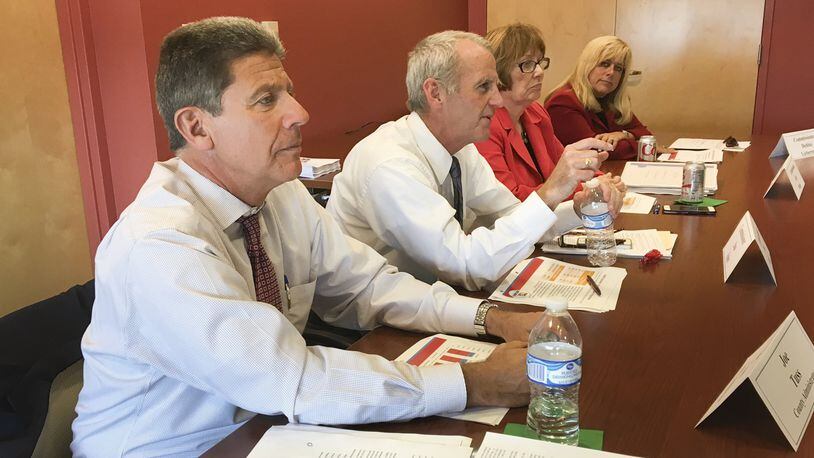County Commissioner Debbie Lieberman said Monday efforts by the County Commissioners’ Association of Ohio to work with state lawmakers and the Kasich administration to secure a federal waiver or agree to an alternative funding mechanisms have run into dead ends.
RELATED: Overdose deaths prompt county coroner to hire more investigators
A temporary fix allows counties to receive the tax revenue only through 2018, she said.
“We need this fixed,” Lieberman said. “For us, $9 million is a lot. Where are we going to cut it from?”
Joe Tuss, Montgomery County administrator, told members of the Five-Year Financial Plan Advisory Committee that the expected shortfall comes on top of previous reductions of state local government funds of $7.4 million and the loss of state property tax reimbursements of $1.4 million. The Great Recession and housing crisis also ate away at property tax revenue and investment income.
The county’s authorized general fund – $150.2 million for 2017 – is 17.5 percent of total county budget but provides most of the money that keeps the county’s sheriff’s department, justice system, commission and others running, Tuss said.
“It represents the lion’s share of the spending that the citizens interact with on a day-to-day basis,” he told the board representing businesses, community groups and government officials.
The 2017 general budget is more than $10 million below the 2008 level and the revenue since has not kept pace with emerging needs, such as combatting a local opioid crisis and ever-rising cost of health insurance for county employees, Tuss said. The costs also pile up for unfunded state mandates such as administering the permits for concealed firearm carriers, paying for public defenders and peace officer training as well as managing storm water.
While a recent triennial review showed 60 percent of residential property values rising in the county for the first time in years, it’s too early to tell how much potential revenue it could bring the county in coming years. Sessions for property owners to contest new values continue through this month.
RELATED: Auditor’s Office launches review sessions to contest property values
Property taxes will bring in just a little over 11 percent, or 16.8 million, of the 2017 general fund revenues, while sales taxes account for about half, or $82.9 million.
Accounting for about 3 percent of revenues, the county’s 2017 investment income is $4.6 million, down from $27.3 million in 2000.
Monday’s meeting examined the financial challenges the county faces. How to address the shortfall will be the focus of the yet-to-be scheduled next meeting.
About the Author
